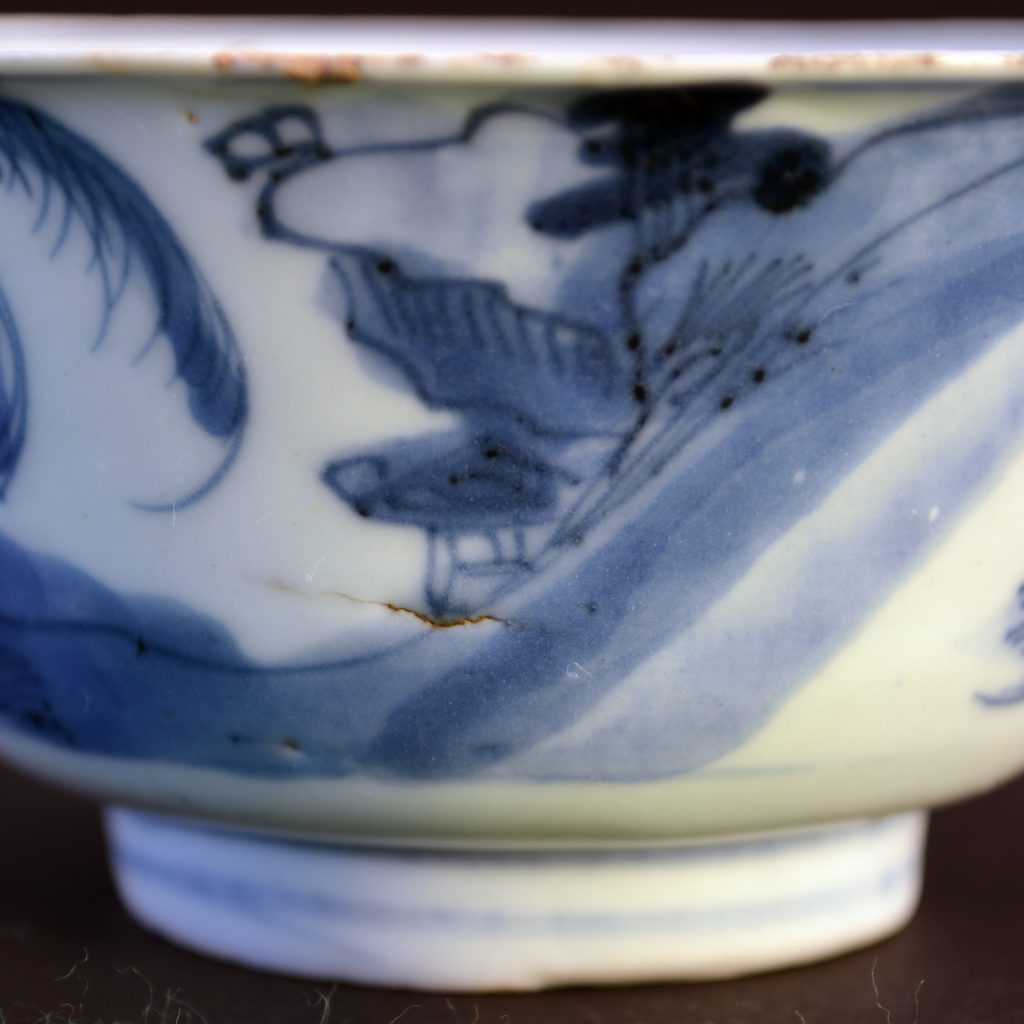
Tianqi Mark and Period 1621 – 1627 Porcelain Bowl
A Rare Tianqi Blue and White Porcelain Bowl, the Base with a Tianqi Six Character Mark and of the Period 1621-1627. The Well and Side of this Small Flared Bowl are Painted in a Sketchy Style with Figures on the Shore by an Extensive Water Side Landscape.
SOLD
- Condition
- A small double section to the rim restuck c.10 x 3 mm, with a tiny chip filled c.2 x 2 mm.
- Size
- Diameter : 10 cm (4 inches)
- Provenance
- R and G McPherson Antiques. Item number 22327. The Collection of Dr. Alain Faure.
- Stock number
- 24526
Information
Tianqi Mark and Period Porcelain 1621 - 1627 :
The disintegration of the Ming dynasty during the first decades of the 17th century saw enormous changes in porcelain production at Jingdezhen. Lack of imperial control combined with disinterest in Imperially commissioned porcelain led to a relaxation in the marking of ceramics. Reign marks which could not be used unless for an imperial order were now being used on some non-Imperial porcelain, especially blue and white porcelain made for export to Japan. During the Tianqi period the four character mark of of the period occurs on occasion, but rarely does the six character mark of Tianqi. These marks are non-Imperial, that is to say they are Minyao (popular ware).
Ko-Sometsuke :
Ko-Sometsuke, meaning `Old Blue and White` is a term used to describe Chinese blue and white porcelain made for Japan. This late Ming porcelain was made from the Wanli period (1573-1620) and ended in the Chongzhen period (1628-1644), the main period of production being the 1620`2 and 1630`s. The porcelain objects produced were made especially for the Japanese market, both the shapes and the designs were tailored to Japanese taste, the production process too allowed for Japanese aesthetics to be included in the finished object. Its seams firing faults were added, repaired tears in the leather-hard body were too frequent to not, in some cases, be deliberate. These imperfections as well as the fritting Mushikui (insect-nibbled) rims and kiln grit on the footrims all added to the Japanese aesthetic. The shapes created were often expressly made for the Japanese tea ceremony meal, the Kaiseki, small dishes for serving food at the tea ceremony are the most commonly encountered form. Designs, presumably taken from Japanese drawings sent to China, are very varied, often using large amount of the white porcelain contrasting well with the asymmetry of the design.



